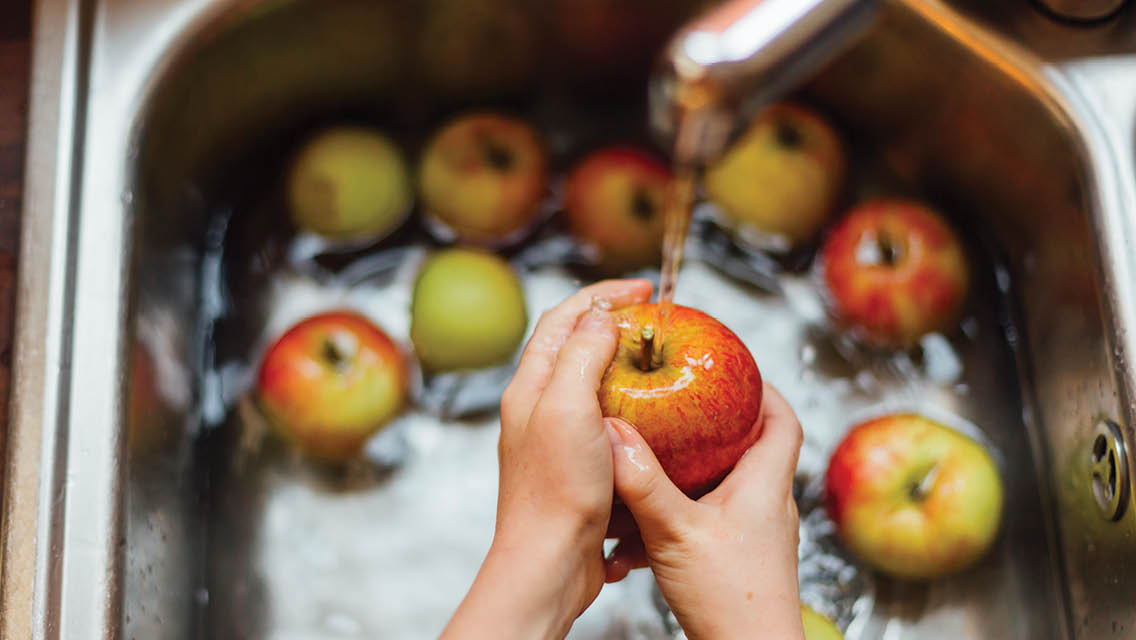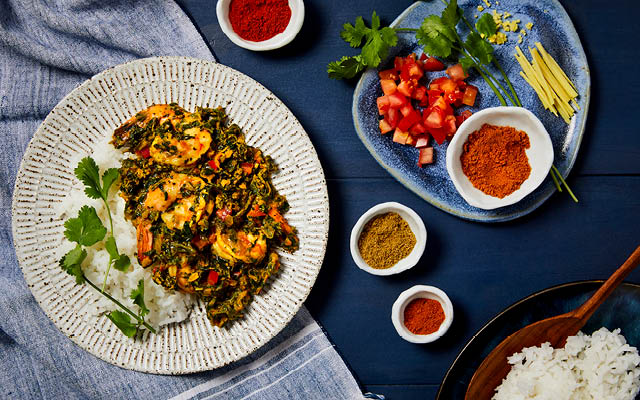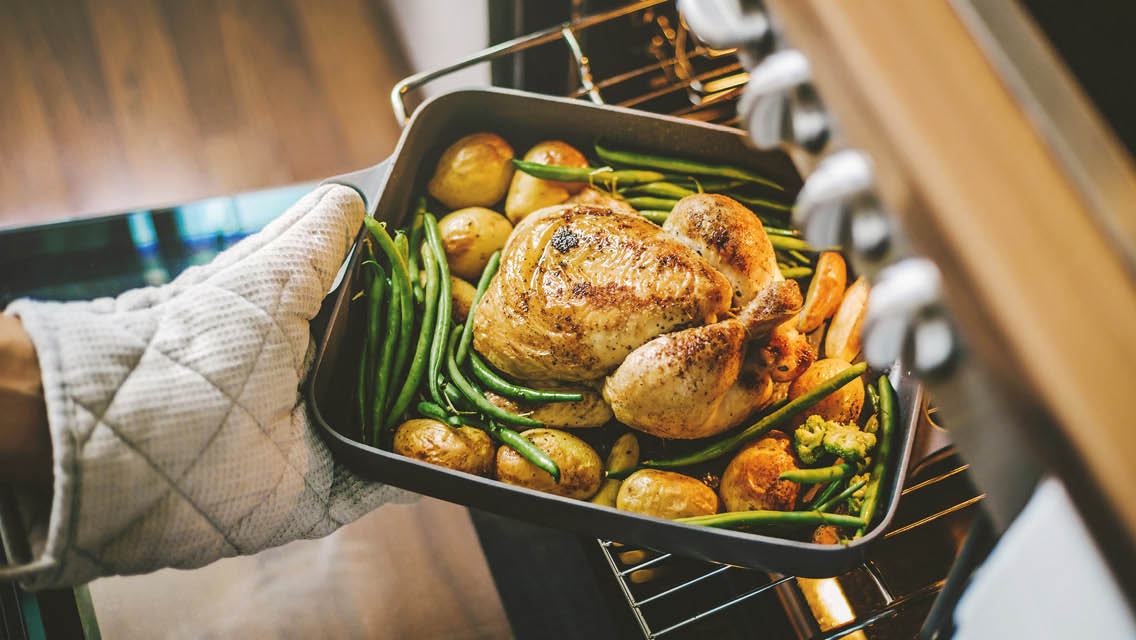We’ve all been there: Looking over the spread at the family cookout, wondering whether it’s still safe to take a scoop of your aunt’s famous potato salad. How long has it been since she took it out of the fridge — an hour? Maybe two?
Whether you’re milling around at a backyard party or meal planning for a Tuesday night, food safety is not the most exciting thing to consider in the kitchen. But faulty food prep can be dangerous. The Centers for Disease Control and Prevention estimates that 48 million people contract foodborne illnesses each year in the United States, leading to 128,000 hospitalizations and 3,000 deaths.
“Contamination is present in a lot of ingredients we use in the kitchen,” says Penn State University senior food-safety extension associate Martin Bucknavage. “Through proper handling and preparation, we normally get by without any issues, but the occasions when we don’t do things properly can lead to significant illness.”
Most of us recognize the threats caused by raw protein — think salmonella. But any raw ingredient can be dangerous, as can food that’s been improperly cooked or stored.
With a few simple precautions, you can be both safe and confident in the kitchen. We spoke to some food-safety experts to clear up several common myths.
Myth #1:
Washing hands is just for kids.
Fact: The simplest, easiest, and most effective way to prevent food contamination is at your fingertips — handwashing.
“Not washing hands is such a huge problem,” says University of Minnesota Extension food-safety educator Suzanne Driessen, who adds that it should be the first thing you do before you start cooking. You know the drill by now: Wash your hands with warm, soapy water for at least 20 seconds, and dry thoroughly.
Most home cooks forget to wash their hands as they move from one task to another, says former Penn State Extension food-safety educator Sharon McDonald, MEd, RD, LDN. “That’s where we tend to see people slip up.”
According to a 2019 survey by the U.S. Food and Drug Administration, 76 percent of respondents reported washing their hands with soap after touching raw meat, but only 68 percent did so before preparing food — and only 39 percent wash after cracking open raw eggs.
Myth #2:
Raw meat is the only place bad bacteria hang out.
Fact: It’s true that raw meat should be handled safely to avoid foodborne illness — but everything from eggshells to uncooked flour can harbor salmonella, E. coli, campylobacter, and other dangerous bacteria. Those are the most common culprits of diarrheal disease, and though most will result in only a few days of mild to moderate symptoms, all have the potential to cause severe illness.
Not washing your hands after touching any of these raw ingredients could lead to cross-contamination of the next thing you touch. That’s why it’s important to wash up after handling any raw food product, including meat, fish, produce, eggs, and uncooked flour.
You can also minimize the potential for cross-contamination by washing surfaces (including countertops and cutting boards) and tools (such as knives and spatulas) as you move through food preparation.
Myth #3:
Rinsing raw meat in water removes any dangerous pathogens.
Fact: When it comes to food, cleaning gets a bit more complicated. Fish, meat, and poultry should not be washed before cooking.
“Something like chicken has a high prevalence of bacteria, so you can’t expect to simply wash it off,” explains Bucknavage, who adds that the water is likely to spread bacteria to other surfaces in your kitchen.
Bucknavage does recommend thoroughly rinsing raw vegetables and fruits to remove any surface contaminants, but they don’t need to be washed with soap or disinfectant.
Myth #4:
You can tell by sight or touch when meat is done.
Fact: Kitchen thermometers are your best friend for safe cooking, but our experts say they’re not used nearly enough by home cooks. Thermometers are the only way to tell if meat, fish, or casseroles are cooked to a temperature adequate to kill common pathogens, including salmonella and campylobacter.
“Cooking without a thermometer is like driving without a speedometer,” says Bucknavage. “You need to use one.”
McDonald adds that temperature is an exact science that requires precise measurement. “Too many people rely on things like ‘Do the juices from chicken run clear?’ and ‘Does it feel firm?’ when checking for meat doneness. But these are not reliable methods.”
To guarantee great-tasting food that’s not overcooked, experts say, cook fish and whole cuts of beef, lamb, or pork to 145 degrees F. Ground meats should be cooked to 160 degrees F, while poultry — whole or ground — and leftovers should hit 165 degrees F.
Myth #5:
Only professional kitchens need to worry about food storage and cooking temperatures.
Fact: As a general rule, refrigerating food below 40 degrees F keeps bad bacteria at bay, and cooking food above 140 degrees F destroys most harmful pathogens. The range between 40 and 140 degrees F is known as the food “danger zone,” because disease-causing bacteria thrive at those temperatures.
To avoid the danger zone, never allow cooked food to sit at room temperature for more than two hours. If you’re serving a meal outside and it’s warmer than 90 degrees F, that window shrinks to one hour, because bacteria can multiply more quickly at higher temperatures.
It’s also vital to cook prepared food to proper temperatures. A recent outbreak of salmonella was linked to frozen, breaded chicken products that were heated in microwaves or air fryers. These machines couldn’t raise the internal temperature of the meat to a safe level.
“Always read the cooking instructions on the label of a prepared food,” Driessen suggests. “It will tell you the temperature needed to make sure it’s safe.” The label will also explain how best to heat the food; sometimes appliances such as air fryers or slow cookers are not recommended.
Myth #6:
Placing hot food in the fridge immediately is the safest way to cool it for storage.
Fact: Leftover food must be refrigerated within two hours after cooking. Although small servings can go into the fridge immediately while still hot, larger amounts must be cooled properly before refrigerator storage. According to the USDA, improper cooling is one of the main ways home-cooked foods get contaminated.
Cooling a dish too slowly on the countertop could leave it sitting in the danger zone for too long — but putting a steaming hot pan of food directly into the fridge can raise the temperature around the dish, making the whole space more hospitable to salmonella and other bacteria.
If you’re making a soup or stew and storing it for later use, Driessen recommends dividing it into shallow containers to cool more quickly before storing. You could also place each container in an ice bath to speed the cooling process. If you’re dealing with a solid dish, like lasagna, try cutting it into smaller pieces to help it cool faster.
What if you accidentally leave your pot of soup at room temperature for several hours, or even overnight? Bring it back to a boil for 10 minutes to inactivate any bacteria, which can multiply more quickly at less than 130 degrees F.
Myth #7:
Put frozen food in a bowl of warm water to thaw it quicker.
Fact: You may have grown up watching your parents or grandparents thaw food this way, but leaving frozen foods at room temperature (whether on the counter or in warm water) risks letting it cross into the danger zone.
Instead, plan ahead and thaw frozen foods overnight in the fridge, where they’ll stay safely below 40 degrees F.
Myth #8:
The old sniff test can tell you if food is still good.
Fact: Simply sniffing or eyeballing food isn’t good enough. Some contaminated food that causes serious illness doesn’t smell or look any different. For instance, the toxins produced by staphylococcus (which causes staph infections) and botulinum (which can lead to botulism) are both tasteless and scentless. And salmonella bacteria do not affect the taste or smell of food.
Instead, label things clearly so you can know how long they’ve been in the fridge. Poultry and ground meat are good for one or two days after purchasing, while fish can be kept in the fridge for up to three days. Leftovers will last three to four days. Whole cuts of raw beef, lamb, and pork can keep for up to five days.
This article originally appeared as “Food Safety at Home” in the May 2022 issue of Experience Life.





This Post Has 0 Comments